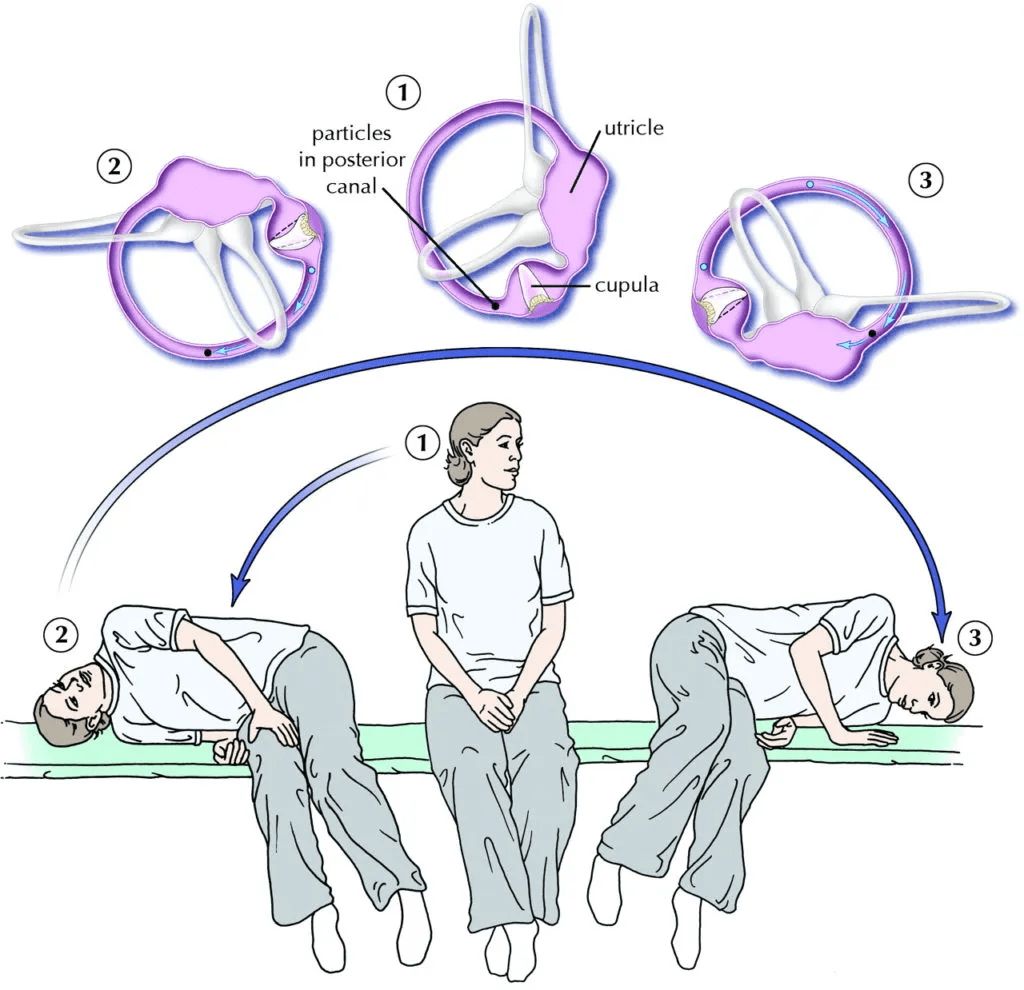Introduction
Vertigo is more than just dizziness; it’s a specific type of dizziness characterized by a commotion of motion where there is none, or an exaggerated sense of motion in response to genuine movement. It can be profoundly unsettling, often leading to vomiting, nausea and a fear of falling.
Definition
Vertigo is defined as a hallucination of self or environment movements, most commonly perceived as a feeling of rotation, usually due to a disturbance in the vestibular system. The vestibular system is one of three sensory systems involved in spatial orientation and maintenance of posture.
Etiology
The causes of vertigo are diverse, ranging from benign to more serious conditions. The most common cause of it is vestibular dysfunction.Common etiologies include:
- Hereditary Acquired
- Infection, e.g. Labyrinthitis, meningitis, vesibular neuronitis
- Meniere’s disease
- Posttraumatic – Drug induced, (e.g. diuretic, aminoglycosides, cytotoxic)
- Cerebellopontine angle tumour (e.g. acoustic neuroma, meningioma)
- Vascular compression of vestibular nerve – Toxic, e.g. alcohol
- Brain-stem ischaemia or infarction TIAs (transient ischaemic attack).
- Multiple sclerosis
- Vertebro-basilar insufficiency acute cerebellitis
- Posterior fossa
- tumour Migraine (basilar artery)
- Epilepsy (temporal lobe focus)
Classification
It may be two types-
- Central vertigo (lesions of brain stem or cerebellum): a central vertigo is chronic and mild in nature, often bidirectional and associated with other central abnormalities.
- peripheral vertigo (labyrinthine in origin): . Acute peripheral lesions cause vertigo of sudden onset, severe in nature, usually unilateral remaining for a few seconds or a few days and is often recurrent and correlated with tinnitus.
Clinical Features
Beyond the core sensation of spinning, clinical features can include:
- Nystagmus (involuntary eye movements)
- Ataxia (uncoordinated ,jerky movements)
- Fatigue and Anxiety
- Nausea and Vomiting
- Imbalance Tinnitus (ringing in the ears) or Hearing Loss (in inner ear conditions)
- Headache or Aura (in MAV)

Physiotherapy Management
Physiotherapy plays a crucial role in managing many forms of vertigo, particularly benign paroxysmal positional vertigo.
- Repositioning Maneuvers: E.g., Epley maneuver for benign paroxysmal positional vertigo (BPPV), to transport.displaced otoconia.
- Vestibular Rehabilitation Therapy (VRT): A tailored exercise program to acclimatize the brain to dizzying stimuli,minimize symptoms and improve balance.
- Balance Training: Exercises to build up postural security and minimize the risk of falls.
- Gaze Stabilization Exercises: To build up visual acuity during head movements.
Diet and Lifestyle Recommendations
Diet plays a vital supportive role in managing vertigo symptoms and improving vestibular health. A well-balanced diet helps control fluid balance, reduce inflammation, and stabilize inner ear function.
- Limit salt intake – Excess sodium can increase fluid retention in the inner ear, worsening dizziness.
- Stay hydrated – Dehydration is a common trigger; ensure sufficient water intake daily.
- Avoid caffeine and alcohol – These can affect inner ear fluid dynamics and balance.
- Include magnesium-rich foods – Such as leafy greens, nuts, and bananas to support nerve health.
- Maintain stable blood sugar levels – Small, regular meals help prevent vertigo episodes linked to hypoglycemia.
Conclusion
Vertigo, while debilitating, is often treatable. Accurate diagnosis is key to productive management, with physiotherapy contribution a highly victorious, non-invasive approach for many familiar forms. Seeking timely professional help can remarkably upgrade quality of life for those experiencing this searching condition.
1. Question: What is the main goal of physiotherapy in managing vertigo?
Answer: The goal is to reduce dizziness, improve balance, and retrain the brain through vestibular rehabilitation exercises.
2. Question: What physiotherapy techniques are used for vertigo?
Answer: Techniques include repositioning maneuvers like the Epley maneuver, gaze stabilization, and balance training.
3. Question: How does Vestibular Rehabilitation Therapy (VRT) help vertigo patients?
Answer: VRT helps the brain adapt to dizzy sensations, improving stability, coordination, and reducing vertigo symptoms.

